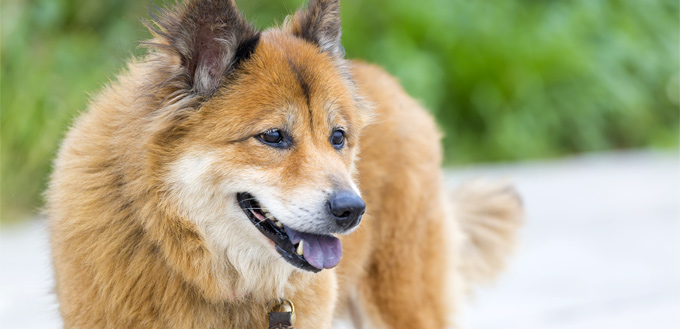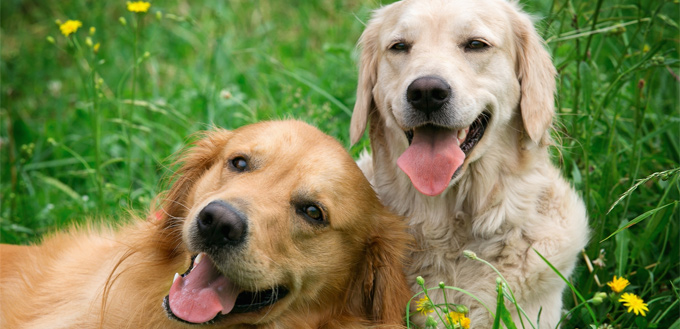Did you know that dogs can smile? If you haven’t already seen it, there are plenty of videos online so have a look. Isn’t it the funniest, but oddly cutest thing you’ve ever seen?! You might wonder how dogs can smile, and, in fact, many argue that they can’t; not like humans do. But, like most things, it is something that can be learned if you are willing to patiently train them. Trust me, it is worth it. It may turn out goofy, it may turn out sweet, but either way, you’ll love it!

Method One
If your dog already naturally occasionally shows his teeth, you can use a simple system of reward to encourage that behaviour.
- Step One: Take note of what makes your dog show their teeth. It may be when they see their toothbrush in anticipation of a good clean, or they could show their teeth before they eat certain dog-safe human foods, particularly bitter foods like fruit and vegetables.
Remember: Always ensure that any human food that you give your pet is safe for them to eat. Seemingly normal foods, like grapes and tomatoes, can be toxic for dogs so be careful.
- Step Two: When they show their teeth, say the command that you want your dog to respond to, for example ‘Smile!’. Then reward this behaviour and create an association with happiness by saying ‘Good Boy’ and giving them a treat, their favourite toy, or any other fun activity that they particularly enjoy.
- Step Three: Repeat as necessary until they are exhibiting the behaviour with the correct stimuli, such as playtime or your chosen command.
Top Tip: Dogs most often show their teeth as acts of aggression. This most definitely does not count as a smile and is dangerous to encourage. If you think you won’t be able to recognise aggression, here are some typical signs to be aware of:
- Growling
- Wrinkling of the snout
- Raised or forward ears
- Not blinking or refusing to meet your gaze
If you think you notice any of these behaviours, make sure you aren’t rewarding it. It may be more effective, and safer, to attempt a different method of training – conditioning behaviour from scratch.
Method Two
There is nothing to stop you from attempting both training techniques together, as long as you ensure that you aren’t exhausting your dog or sending mixed signals. This technique essentially assumes your dog has never smiled at all, and so needs you to physically show them what you want them to do.
- Step One: Find a good, teachable environment in which your dog is undistracted and willing. This is the most crucial step as you could otherwise be wasting your time or, worse, may create a negative association with training for your dog.
- Step Two: Gently put their face into the smiling position, demonstrate a smile of your own and say your command word or phrase. Use the exact same command every time, but you can be creative with it. I like the idea of using ‘say cheese!’. If you only want them to smile in response to happy stimuli, you can forgo this, but it can be more difficult to communicate what you want without it.
- Step Three: Positively reinforce the behaviour by saying ‘Good girl!’ and giving them a reward. You have to make sure they understand that you are rewarding the smile so ensure they are truly smiling and showing teeth of their own ability, rather them you just pushing their face into position.
- Step Four: The ideal, if your pet can handle it, is to do a couple of training sessions a day, with each lasting only a few minutes. Try to do them after fun activities so that they feel happy and create an association between happiness and smiling. Do the training sessions a variety of locations, and slowly increase distractions to increase responsiveness and attentiveness.
- Step Five: As they improve and start to smile on command, or in response to happy stimuli, start to decrease the number of treats they are being offered. Give a treat every second smile, then third, then fourth, and so on. This ensures that smiling continues, regardless of immediate reward.
Related Post: Dog Treats

Tips
If you aren’t a professional trainer, training dogs to do anything can be a challenge, so here are some extra tips to make sure you get the best results possible:
- Rewards don’t need to be huge, but they do need to be instant. Instant verbal praise is better than a delayed large treat. Constant, positive reinforcement is your aim.
- Use a variety of rewards, from toys to verbal praise. This will make sure the focus is on the smile, not the treat.
- Rewards are different from bribes. Many owners make the mistake of using treats to bribe their pups into training in the first place. This will teach them to only behave for food and won’t ensure they are in a learning mood.
- Focus on your posture. Stand upright, keep your hands out of your pockets and rewards out of sight so they aren’t distracted by the possibility of treats. Your dog must be focused on their task in order to earn their reward.
- Positivity is important. Just as reinforcing aggression is a problem, so is causing stress. You don’t want an association with anxiety to develop. Behaviour that could indicate stress includes:
- Firmly closed jaw and mouth
- Squinting
- Salivating
- Licking Lips
- Raised, forward ears
- Earns flattened against skull
- Trying to look small
- Similarly, don’t use aversive techniques or punishment. Shock collars, choke chains and yelling will not encourage a smile. ‘Alpha male’ techniques, such as the infamous ‘alpha roll’ in which you pin your dog on their side, are actively dangerous and will not create positive reinforcement. Being a good leader has nothing to do with domination.
- The restriction of treats should be enough to discourage bad behaviour during training. It will take time, but they will learn which behaviours you approve of, and which you don’t.
- Don’t push your dog too hard. Short, successful sessions are better than long, exhausting ones. Quit while you’re ahead, and only start if your dog is calm, focused and undistracted.
- Patience is key. Plenty of training sessions feel unsuccessful, but don’t get frustrated and lash out as that will frighten your dog and set you back. Giving up for the day isn’t wrong when you aren’t achieving anything. They will get it eventually.
Sources:
- Lauren Novack, How to Teach a Dog to Smile, WikiHow
- Kea Grace, How to Train a Dog How to Smile, The Nest







